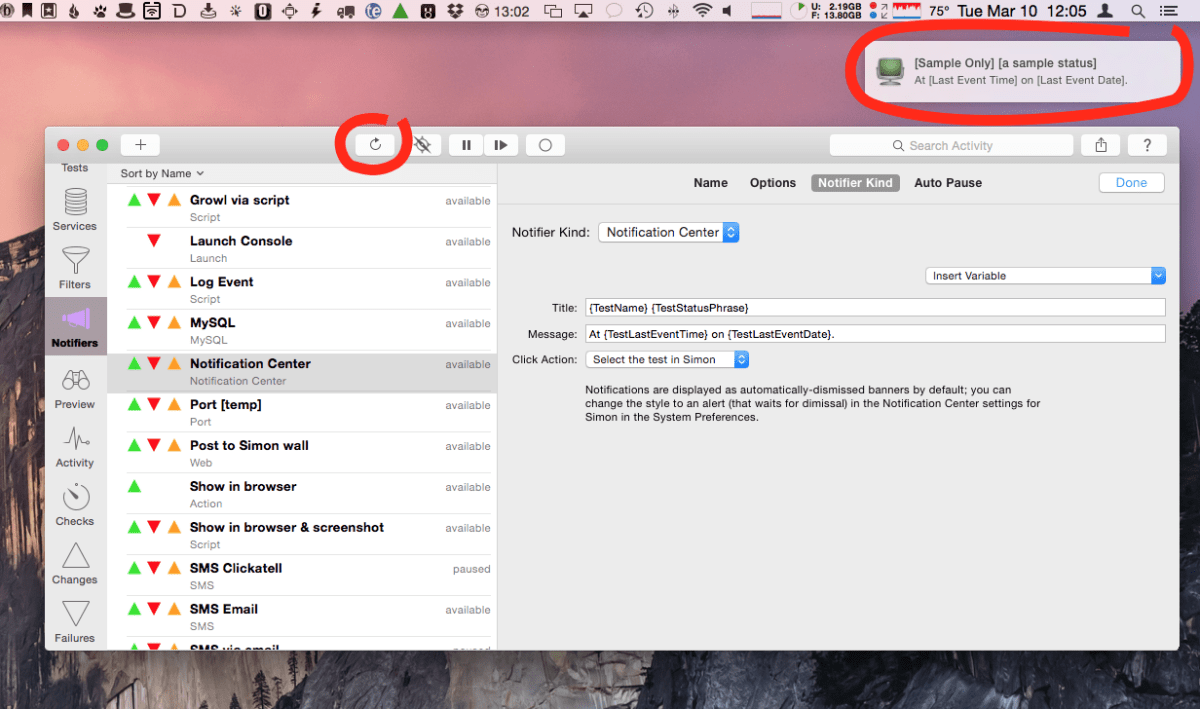
Welcome
This is DejalNews, an occasional newsletter from Dejal.
Has it been that long?!
Apparently the previous DejalNews newsletter was sent way back in June 2021! It doesn’t seem that long ago.
Want to get this newsletter in your inbox? Sign up on the Dejal site.
Time Out 2.9.2
Time Out version 2.9.2 was recently released, with several fixes and improvements.
Since it’s been so long, I should also mention version 2.9, which includes several great enhancements, including a status message in the sidebar to indicate why a break was skipped etc, the ability to schedule and exclude breaks using calendar events, support for Monterey focus, an option to hide the Pause function, new break options to pause or reset an individual break, and much more.
Read the blog post for more information on Time Out 2.9.2, and if you missed it, the details of version 2.9.
Simon 5.1.1
My pro site monitoring app also had a recent update, to version 5.1.1. It includes some important fixes.
And again, if you missed reading about version 5.1, it included the ability to disable rendering a Web Page test, the addition of an automatic data backup, support for macOS Ventura, updated example tests, and several other improvements and fixes.
Read the Simon 5.1.1 blog post for the latest update, or the version 5.1 post if you missed that.
New Dejal blog
Late last year I created a new blog for Dejal, powered by WordPress. Unfortunately that meant that the older posts are no longer on the site, but they are all available in the Internet Archive, and I have been working on updating and re-publishing the most interesting posts with tips for Time Out and Simon, on a weekly basis. So check back regularly. Or if you use an RSS reader or Apple News, you can subscribe to the blog to never miss a post.
Sinclair Trails
Back in June 2021 when the previous newsletter was published, my wife and I were living on a 5-acre homestead with ducks, chickens, feral cats, bees, etc. But just a few months later we decided to sell the homestead and most of our possessions, buy a 40-foot luxury Tiffin motorhome, and start traveling the country full-time.
If that sounds interesting, you can follow our adventures on my other blog, Sinclair Trails, where I post every weekday about a related topic, including additions and modifications to our coach, photos of our travels, timelapse videos of driving between locations on YouTube, reviews of RV parks, and photos of National Parks and other interesting places we visit.
(And if you’re only interested in the apps, that’s fine too.)
Reddit
If you use Reddit, you may like to join the r/Dejal subreddit, as a community for Dejal customers, and another support channel.
I hope you found this newsletter interesting. Let me know in the Dejal subreddit. I will try to publish another one sooner than a year or so from now!
– David


